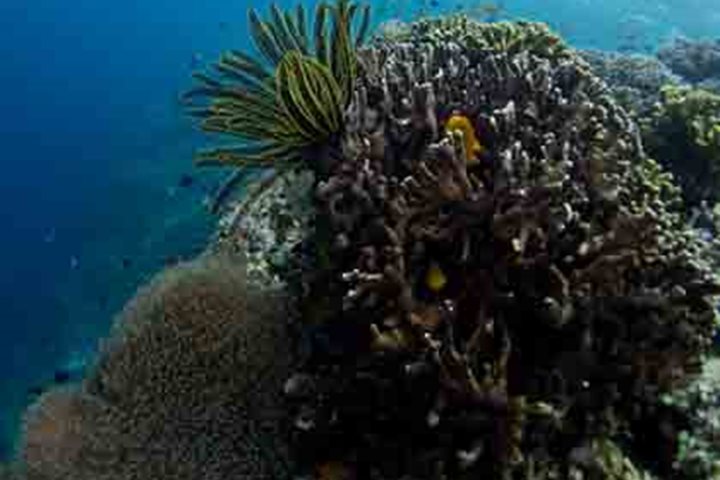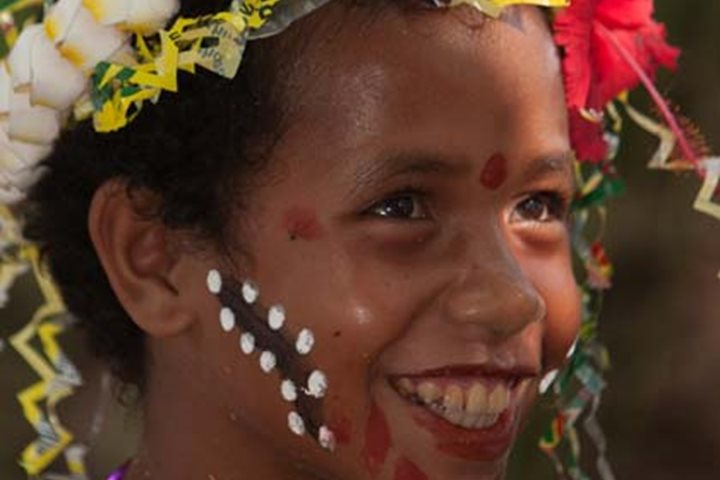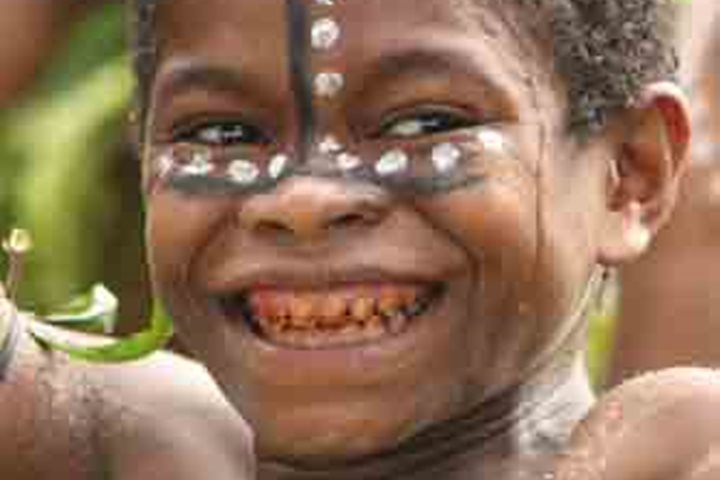We spent another incredible day in the Asmat region of southern New Guinea. The entire Asmat vicinity is essentially a giant delta formed from countless rivers that drain the central mountainous regions. These rivers are tidally-influenced, brackish, and infiltrate the largest mangrove habitat on Earth. At first glance, it appears very foreboding and an impossible environment for human survival. We can barely imagine a harsher environment in which to live. But, people do survive here and have done so for thousands of years. The Asmat people live here.
Soon after sunrise, we anchored offshore from Yahun-Yufri villages. It is a complex composed of two villages, located virtually side by side. Amazingly, the inhabitants have been feuding for almost 20 years, but are inextricably linked through several previous marriages and necessary trade. We learned that our visit seemed to be an impetus for a rather heartwarming coming together of the two groups. Upon arrival, we were greeted with an impressive show of many war canoes that were paddled around and in between our Zodiacs. In honor of our visit ashore, for the first time in decades, a magnificent dance was performed in front of the Yufri jeu (longhouse) using all the Spirit Masks possessed by both villages. We were witness to a wondrous event seldom seen by outsiders. These spirit masks are each individually sacred and only a few are seen even in museum collections.
Once the most feared head-hunters in New Guinea, their lifestyle is now considerably changed through the interventions of missionaries and government policies. Perhaps that is to our advantage, because there is still a fierceness and hardness to their demeanor. But, a big, toothy smile instantly dispels all that.
The Asmat are known among themselves as the People of the Wood. Their traditional beliefs describe how they were carved from wood by the great creator, Fumeripitsj. He then beat a drum rhythm, and they came to life and danced for him…which is why Asmat dancers wiggle their knees to symbolize that change from wood to flesh. Before the coming of Europeans, the Asmat were still a stone-aged people. They used local resources of wood, shell, and bone to make tools and weapons, and had to trade with far flung highlanders for very valuable and essential stones for making axes to chop down trees and create spectacular ceremonial wood carvings. Their wood art, which is often referred to as the finest ‘primitive art in the world,’ is understandably held in high esteem by museums and collectors around the globe. As we had hoped, many examples of their superb art eventually appeared…all of it for sale.
We also had plenty of time to wander about on the extensive boardwalks and see the narrow river separating the villages, lots of exposed mud, stilt home, the Christian Church, several fish pools, and some small vegetable plots. This made it obvious as to why the villages are located here. There are a few spots of slightly raised land that obviously do not flood during high tides, giving the inhabitants a chance to enjoy some agriculture. In the afternoon, we sailed back to the Arafura Sea and then began our long voyage to Papua New Guinea.







